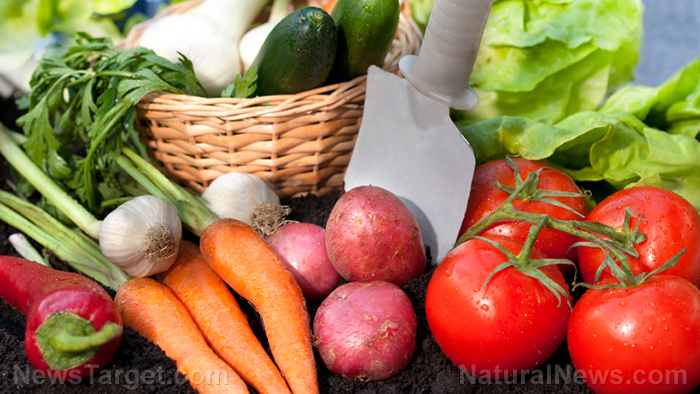
Advertisement
Spring is the perfect time to start a home garden, even if you’re just a beginner. Growing your own food can inspire you to make better choices about what you put on the plate. You also get to enjoy the food more because of the weeks-long effort it takes to get it to the table.
Plus, home gardening ensures that the fruits and vegetables you eat are free of harmful pesticides and artificial fertilizers. You also get to save a ton of money over time, as you no longer have to buy fresh produce.
But before you grab seeds and planter boxes, make sure you have the right types of soil, as certain vegetables require a specific type. You can also create organic soil mixes to add nutrients to the soil. Vegetable scraps can be used as organic fertilizers, while orange peels make for excellent insect repellents.
Here are 10 nutrient-dense fruits and vegetables that you can easily grow in your own garden.
Kale
Cruciferous vegetables like kale grow all season long. Plus, it contains antioxidants, such as vitamins A, C and E, and heart-healthy micronutrients like calcium, potassium and manganese. To grow kale, dig holes in the soil that are 1/4 inch-deep and plant the seeds. It should be ready to harvest after a month.
Microgreens
Microgreens are tiny, edible seedlings of various herbs and vegetables. Like most sprouts, microgreens are excellent sources of protein, dietary fiber and antioxidants. Microgreens are widely consumed as part of salads due to the seedlings’ strong flavors and crisp texture. Plant the seeds in a container and place it on a sunny spot. You should be able to harvest microgreens in as fast as 14 days.
Blueberries
Blueberries are chock-full of antioxidants known as anthocyanins that support cardiovascular health, improve brain functions and lower the risk of cancer. Since blueberry bushes can take up space, dig holes that are about 20 inches deep and 18 inches wide. If you are planting several bushes, leave four to five feet of space in between each bush to prevent overcrowding. Most early season varieties of blueberries can be harvested by June.
Sunchokes
Sunchokes, or Jerusalem artichokes, are root vegetables that are known to have anti-hypertension and anti-hyperlipidemia activities. Sunchokes are also excellent sources of iron, which promotes blood circulation and prevents anemia. Root vegetables can be intimidating, but most varieties are quite low-maintenance. Sunchoke, for instance, can tolerate loose and poor-quality soil.
Sweet potatoes
Sweet potatoes are highly nutritious sources of carbohydrates and dietary fiber. Like sunchokes, sweet potatoes are root vegetables so it is best to plant the spuds deep in the soil. Sweet potatoes should mature after three months at the very least.
Pumpkins
Pumpkins have high concentrations of vitamin A that protect against vision loss. Plant the seeds directly on the ground. Try to pick a sunny spot to encourage optimal growth and keep the general area dry, as dampness can damage the pumpkin itself.
Cabbage
Leafy green vegetables like cabbage contain immune-boosting nutrients like vitamin C, protein and dietary fiber. If you plan to use planter boxes, it is best to use the non-heading varieties to avoid overcrowding.
Chia sprouts
Chia seeds are excellent sources of omega-3 fatty acids that support heart health. But you can also sprout the seeds to create a healthy addition to salads. Sprouts are also one of the easiest plants to cultivate, as most varieties germinate in as fast as two weeks. You can also sprout seeds in shallow containers, and sprouts generally do not require maintenance.
Sunflower seeds
Like most seeds, sunflower seeds are chock-full of high-quality protein and vitamin E, an antioxidant that maintains healthy skin. But you can also grow sunflowers themselves, so you don’t have to buy the prepackaged edible seeds. Depending on the variety of the sunflower, the seeds can sprout in seven to 10 days and you can expect to have a mature flower within 80 to 120 days.
Peppermint
As a medicinal herb, peppermint has active compounds that can induce relaxation, minimize stress and reduce anxiety. To grow peppermint, plant the seeds in rich, moist soil about six to eight inches apart to prevent overcrowding. The peppermint should sprout after three weeks.
There are tons of superfoods that you can grow right at home. If you wish to cultivate fruits and vegetables that are not on the list, do your research and check if the fruit or vegetable is amenable to the climate that you have. It also helps to have neighbors or friends who have vegetable gardens as well, so you can learn alongside experienced gardeners.
Sources:
Advertisements







